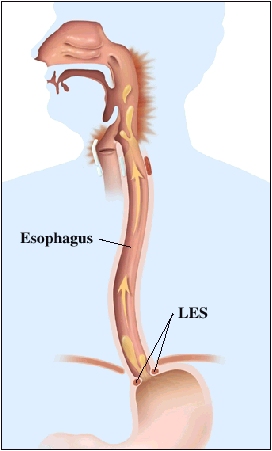What Is Gerd?
Welcome to our health education library. The information shared below is provided to you as an educational and informational source only and is not intended to replace a medical examination or consultation, or medical advice given to you by a physician or medical professional.
If you feel a painful burning sensation in your chest after you eat, you may have gastroesophageal reflux disease (GERD). Heartburn is a classic symptom of GERD, but you may have other symptoms as well.
When You Have a Reflux Problem
With GERD, the weak LES allows food and fluids to travel back, or reflux, into the esophagus.
Note: Chest pain may also be caused by heart problems. Be sure to have all chest pain evaluated by a doctor.
After you eat, food travels from your mouth down the esophagus to your stomach. Along the way, food passes through a one-way valve called the lower esophageal sphincter (LES), the opening to your stomach. Normally the LES opens when you swallow. It allows food to enter the stomach, then closes quickly. With GERD, the LES doesn't work normally. It allows food and stomach acid to travel back (reflux) into the esophagus.
Some Common Symptoms
- Frequent heartburn or burping
- Sour-tasting fluid backing up into your mouth
- Symptoms that get worse after you eat, bend over, or lie down
- Difficulty or pain when swallowing
Relieving Your Discomfort
You and your health care provider can work together to find the treatment options that best relieve your symptoms. These may include lifestyle changes, medication, and possibly surgery.
Discover leading-edge gastroenterology care. Call Digestive Disease Consultants of Orange County at 949.612.9090 or simply use the Request an Appointment form.

